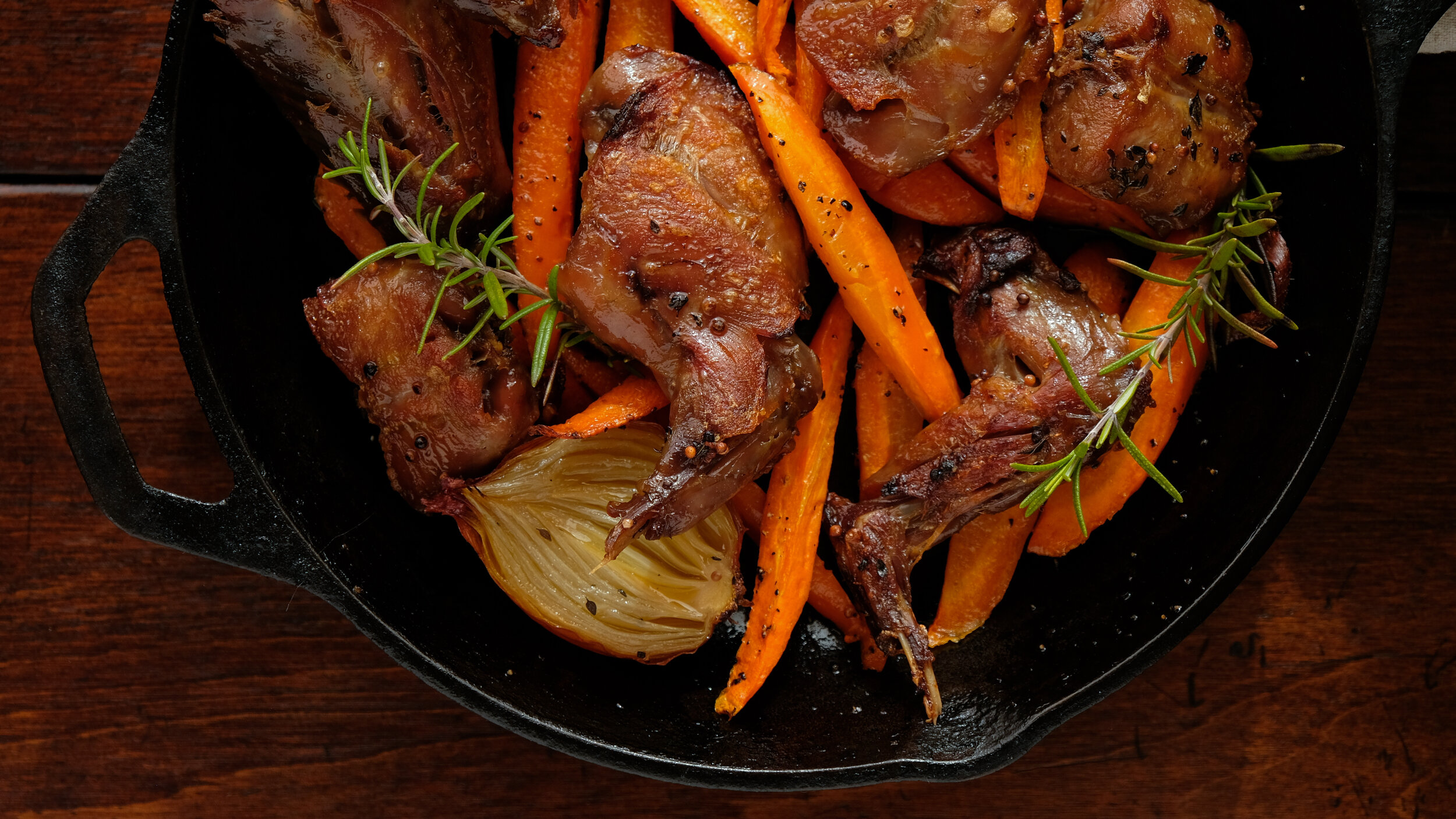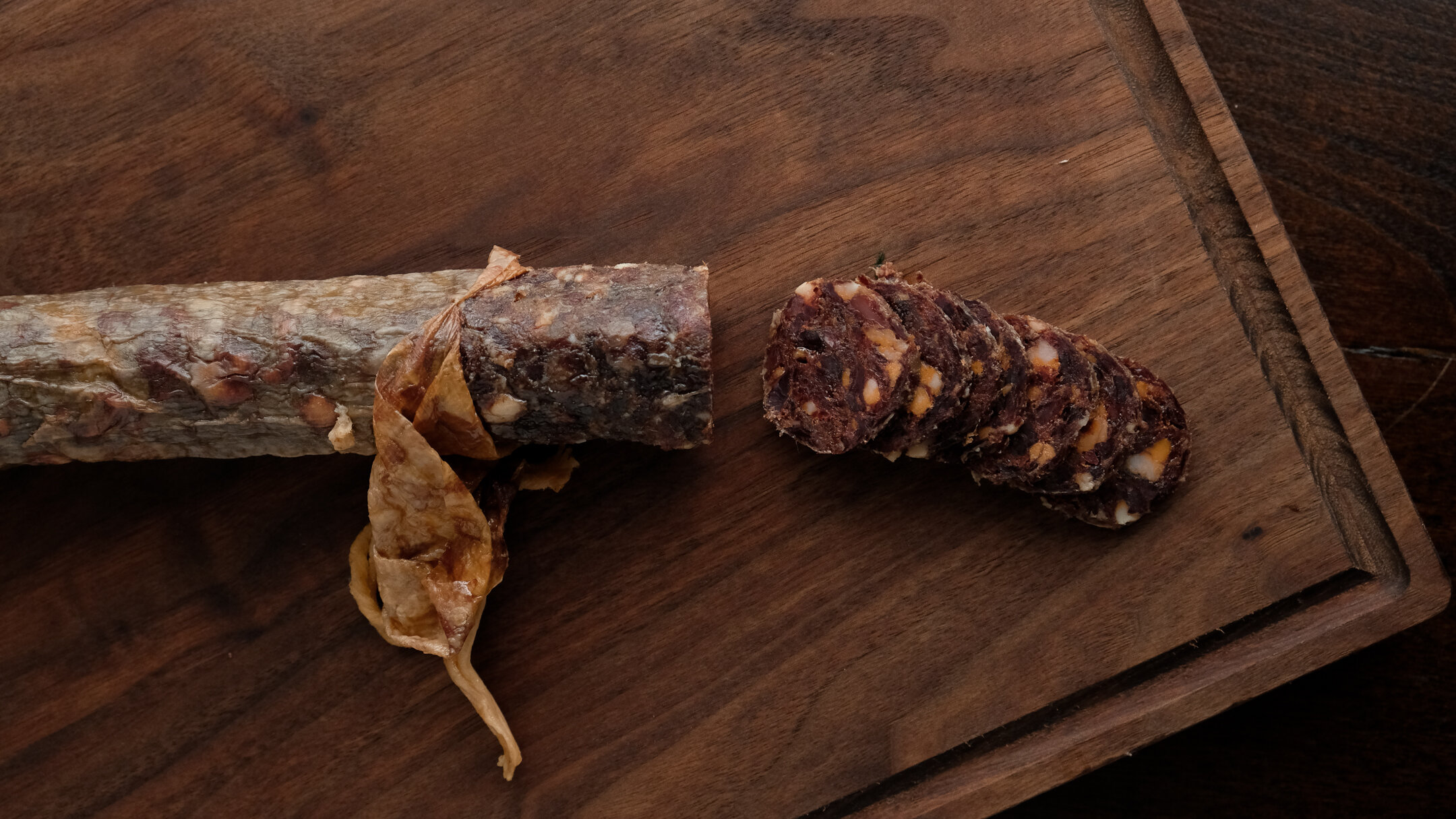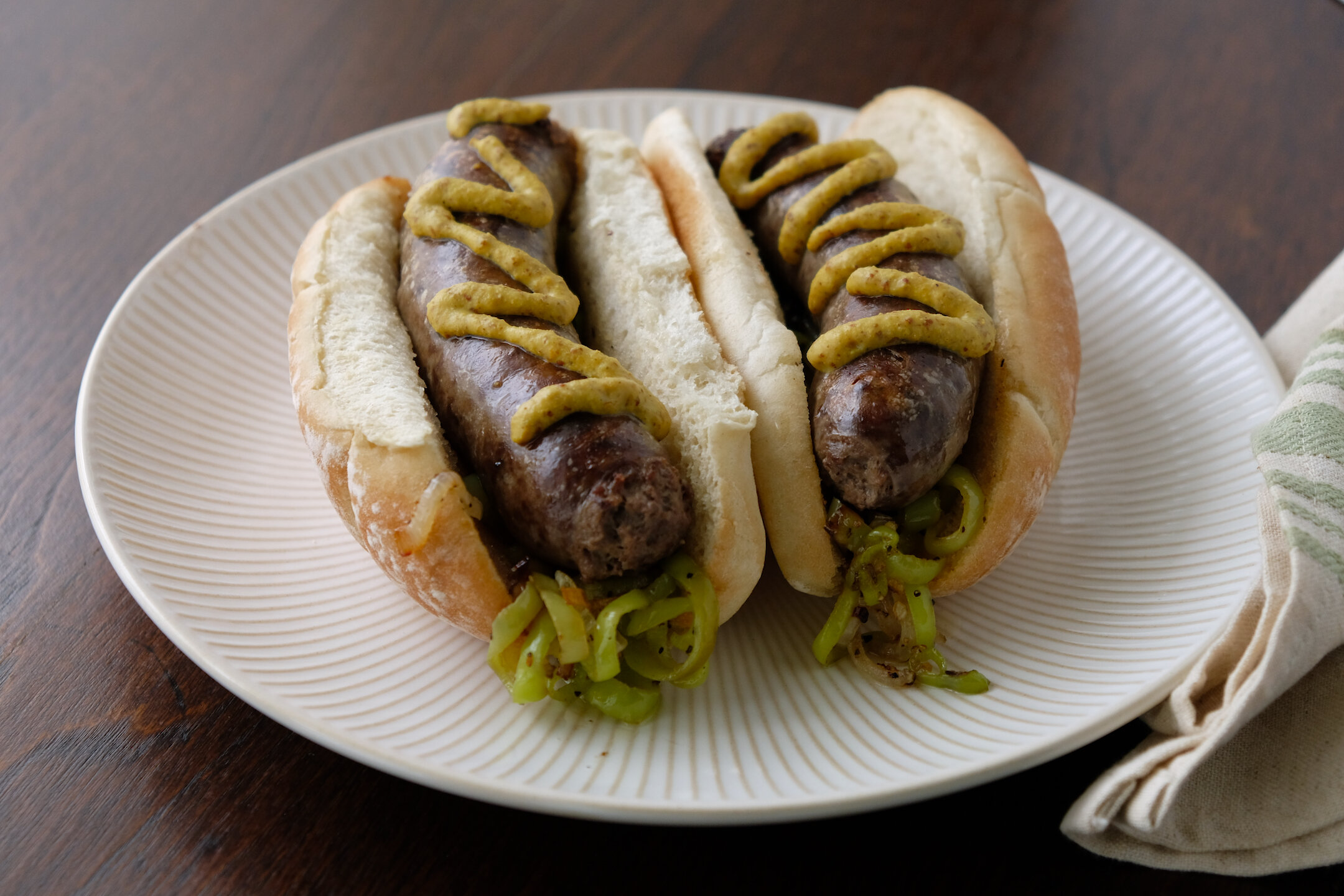Jamaican Beaver Tail Stew

A lot of our recipes are old standbys, tried-and-trues that we’ve honed over the years. This is not one of those- we had never made our own oxtail stew, and definitely never with beaver. It turned out incredible. I can’t believe we’d never visited this dish before, and I can’t wait to add this to our arsenal of savory, warming dinners.
We thought to make it because when you look at the structure of the beaver’s tail muscle (not the “flapper,” but the muscle above it), the resemblance to oxtail is uncanny. It’s got a dense structure with lots of connective tissue and a layer of white fat on the outside. The beaver fat itself is very good- similar to pork fat but a little more complex. Knowing that beaver fat is delicious, this seemed like a great way to utilize a fatty and tough cut of meat. Plus we love anything braised with spicy peppers.
This dish was wonderful the first night and got even better after a night in the fridge- the flavors really meld and grow. There is a ton of depth of flavor and a great balance of sweetness and spice. All that connective tissue and collagen in the beaver tail cooks down into a broth so thick that when it cools, you can stand a spoon in it. Sometimes beans just feel like a filler, but the butter beans were unexpectedly amazing in the dish. They have their own vegetal sweetness and a creamy texture that perfectly complements the other elements in the stew.
You could use oxtail instead of the beaver tail in this recipe, of course, but that sounds boring. Please note that we did not use the beaver “flapper” (which most people would call the tail), which is mostly fat and gristle, to make this stew. We used the tail muscle, which is above the flapper and is mostly meat, with a little connective tissue and fat.
Jamaican Beaver Tail Stew Recipe
Please note- this recipe calls for the tail muscle, not the tail (“flapper”) itself
Serves: 4-6
Cook time: 30 minutes active, 2-3 hours inactive
Ingredients:
2-3 beaver tail muscles, cut between the joints into ~2 inch segments.
¼ cup +2 tbsp light brown sugar
½ cup hot water (have ready when starting to cook)
~1 quart stock (we used beaver stock, substitute chicken or similar stock)
2 medium onions, diced
6 cloves garlic, minced
2” ginger, peeled, minced
1-2 scotch bonnet or habanero peppers, whole
4 sprigs thyme
½ tsp allspice
3 tbsp soy sauce
1 tbsp worcestershire sauce
¼ cup flour
3 cups cooked or canned butter beans
Method:
Add ¼ cup brown sugar to a dutch oven or similar heavy bottomed, high sided pan. Turn heat to medium high and melt the sugar, stirring often. Do not take your eyes off the pan during this step- a few seconds will be the difference between a sticky glaze and a burnt mess. Allow the sugar to darken and almost start smoking, then carefully add in around ½ cup of hot water and stir to dissolve.
Heavily season the beavertail segments with salt and pepper and add to the pan with the sugar glaze. Keep the pan at a medium high heat and “brown” the meat evenly in the glaze for 1-2 minutes per side. Try to brown all surfaces of the meat. Remove beavertail segments from pan.
Add in about half of the diced onions and all the garlic, ginger, hot peppers and thyme. Stir and cook until fragrant, 1-2 minutes, then put beaver tails back into pan. Add stock to almost cover the meat. Bring to a simmer and cover pan. Adjust heat and allow to simmer for 1-2 hours until the meat is just barely fork tender.
Add in soy sauce, Worcestershire and the remaining 2 tbsp brown sugar, stir and taste, then adjust seasoning as needed. Add in the other half of the onions and half of the scallions, simmer for 15 minutes.
Remove 2-3 cups of liquid from the pan with a ladle and put in a blender. Add in flour and blend until smooth. Put back into the pan and stir. Stir in butter beans and simmer for 5 minutes. Serve on its own or with rice, and garnish with scallions and sliced peppers if you want more heat.
































